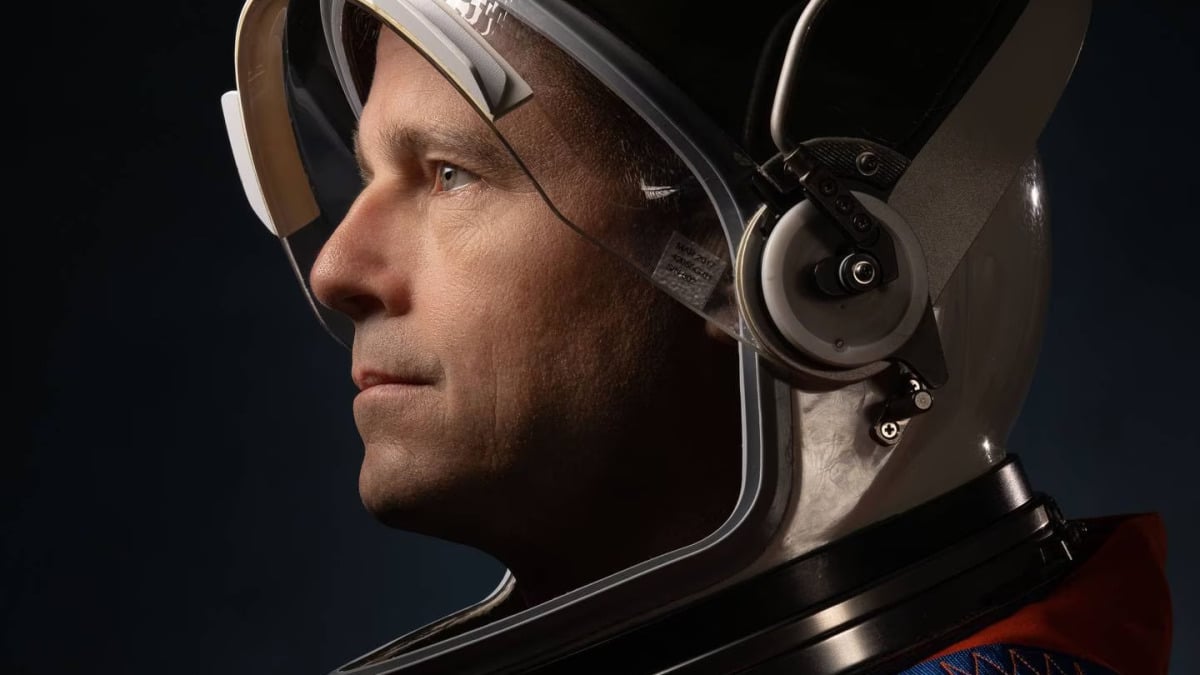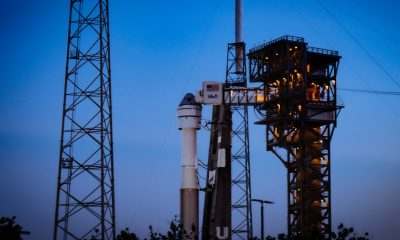Entertainment
NASA’s Artemis 2 commander Reid Wiseman isn’t perfect

The stereotype of an astronaut is apple pie and American exceptionalism — a perfect and fearless adventurer, neatly encapsulated in a bubble helmet. That’s not Reid Wiseman.
He is not some perfect Buzz Lightyear clone. He didn’t make straight-As, he’s occasionally late, and, yes, the idea of dying in space scares him.
There’s a refreshing realness to Wiseman, the commander of the first human mission to the moon in over a half-century, the person NASA chose to lead the Artemis II crew on a test drive of the spanking-new spaceship Orion, 230,000 miles from Earth(Opens in a new tab).
This is the Artemis generation, Wiseman says, as if to clarify that many of the Apollo ways of doing spaceflight are history. Just look at his crewmates, a “slice of North America,” to literally see what’s changed, he says. Christina Hammock Koch and Victor Glover will be the first woman and person of color to travel in deep space, and Jeremy Hansen, a Canadian astronaut, represents NASA’s new commitment to international cooperation.
“None of us are these crazy, hair-on-fire test pilots of the 1950s that you read about,” he said. “We are calculated. We will not fly this vehicle until NASA engineering and the industry partners are ready for us to fly. We will know everything we can about the systems. We will have trained in every possible failure mode.”
Tweet may have been deleted
(opens in a new tab)
(Opens in a new tab)
On Tuesday of last week, he sat down to chat with Mashable about the upcoming mission: ten minutes to tell a reporter everything about his life, the mission, and thoughts on space travel. Wiseman’s morning was a blitz of such fleeting interviews, following the crew announcement the day before. He had likely lost count of how many times he had told the one about how he was 50 minutes late for the meeting with his boss — and his boss’s boss — to learn he was picked to go to the moon.
“Are you recording my image, my visuals?” he asks as our video conference begins, amid champs.
“No,” I say.
“OK, awesome,” says Wiseman, 47, basking in a rare respite from the camera. In 24 hours, he’d be flashing his smile and putting on the charm for The Late Show with Stephen Colbert. “I’m going to keep chewing this gum. I’ve been hearing a lot of comments.”

Reid Wiseman spent 165 days off the planet, conducting experiments on human physiology and fluid dynamics in orbit while the station whipped 18,000 mph around Earth.
Credit: NASA
The Artemis II mission, slated for November 2024, will be Wiseman’s second trip into space. He served previously as a flight engineer at the International Space Station in 2014. There he spent 165 days(Opens in a new tab), conducting experiments on human physiology and fluid dynamics while the station whizzed 18,000 mph around Earth. Twice, he ventured out on spacewalks, with nothing standing between him and the overwhelming overview effect.
Want more science and tech news delivered straight to your inbox? Sign up for Mashable’s Top Stories newsletter today.
But what he became known for was his candid and frequent use of social media, sharing his boyish wonder through photos — lava-spewing volcanoes, storms swirling, the neon Northern Lights, and landmarks like the Great Pyramid of Giza, seen from the top down. It’s what kept him hopeful and curious while toiling those six months away from his family.
“I used to think I was scared of heights, but now I know I was just scared of gravity,” he tweeted Oct. 10, 2014.
Tweet may have been deleted
(opens in a new tab)
(Opens in a new tab)

Reid Wiseman served for six months aboard the International Space Station in 2014.
Credit: NASA
Most people might assume to reach the pinnacle of his career, Wiseman must have finished top of his class, graduated with honors, and excelled in athletics and academics. He knew from an early age he had wanted to fly in space, even with the memory of the Space Shuttle Challenger disaster burned into his brain. He watched the Blue Angels soar over Annapolis every year, their wings cutting spectacular formations overhead, and he dreamed of gliding as high, if not higher.
So he took Russian in high school, thinking it might help with his future aspirations. A former teacher told The Baltimore Sun in 2014 that Wiseman wasn’t the top student but had an “unbelievable” personality(Opens in a new tab).
“I used to think I was scared of heights, but now I know I was just scared of gravity.”

Artemis II Cmmdr. Reid Wiseman conducting a spacewalk outside the International Space Station in 2014.
Credit: NASA / ESA / Alexander Gerst
It was his older brother, Bill, who more typically fit the destined-for-greatness mold, eventually becoming a U.S. Navy SEAL. Wiseman, who wasn’t a straight-A student and seemed more like marching band material than an athlete, hoped to follow his footsteps into the Naval Academy.
But Wiseman was rejected. Instead, he went to Rensselaer Polytechnic Institute in New York, where he received a bachelor’s degree in computer and systems engineering.
He joined the Navy and became a pilot, deploying three times to the Middle East, flying jets off a carrier deck, and eventually rose to the rank of captain. Later he earned a master’s degree in systems engineering from Johns Hopkins University.
When he goes back to his stomping grounds around Baltimore, where 20 percent(Opens in a new tab) of the city is in poverty and neighborhoods are riddled with violent crime(Opens in a new tab), he urges young people to see there isn’t a single trajectory to this dream job: Take five minutes and Google all of the crew members on Artemis II to see how varied their paths were to the astronaut corps.
“Don’t just look at the faces,” he said. “Just really try to see what we’ve done in our lives because we are four unique people.”
Tweet may have been deleted
(opens in a new tab)
(Opens in a new tab)
He’s eager for the opportunity to pass around the far side of the moon and see the Earth as a small pearl in the blackest sea. Maybe somehow he’ll even be able to beam back pictures, living up to his reputation as Twitter king.
He and his crewmates will join the ranks of only 24(Opens in a new tab) other humans who have traveled to deep space. Wiseman, who is a widower, will leave his two teenage daughters back on Earth while he leads the 10-day mission.
He admits he often wrestles with thoughts of why go on this dangerous, albeit historic, spaceflight.
“I also just think about, ‘Why do you get in a car and drive to work? That’s pretty risky,'” he said. “Life is filled with risks, so why would anybody choose to not live? Go out there and explore. Go do great things.”
-

 Entertainment6 days ago
Entertainment6 days agoHands-on with the Claude AI app: It’s pleasant to use, but janky
-

 Entertainment4 days ago
Entertainment4 days agoApple Watch Series 9 vs. SE: A smartwatch skeptic tested both for 13 days
-

 Business6 days ago
Business6 days agoHaun Ventures is riding the bitcoin high
-

 Entertainment5 days ago
Entertainment5 days ago5 essential gadgets for turning your home into a self-care sanctuary
-

 Business3 days ago
Business3 days agoGoogle lays off workers, Tesla cans its Supercharger team and UnitedHealthcare reveals security lapses
-

 Entertainment4 days ago
Entertainment4 days agoThe greatest films on Prime Video right now
-

 Business4 days ago
Business4 days agoGoogle dubs Epic’s demands from its antitrust win ‘unnecessary’ and ‘far beyond the scope’ of the verdict
-

 Business5 days ago
Business5 days agoApple: pay attention to emerging markets, not falling China sales



























